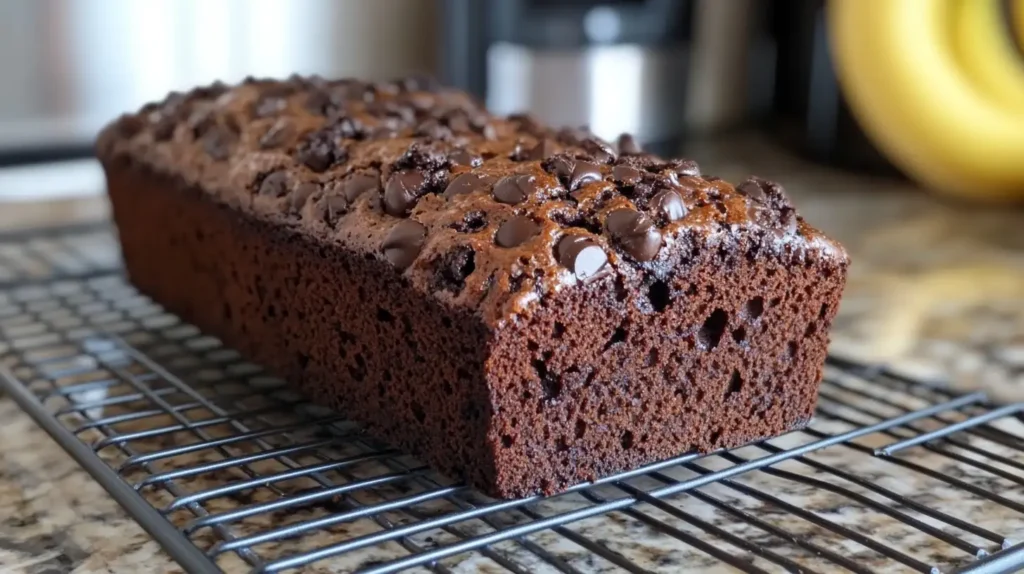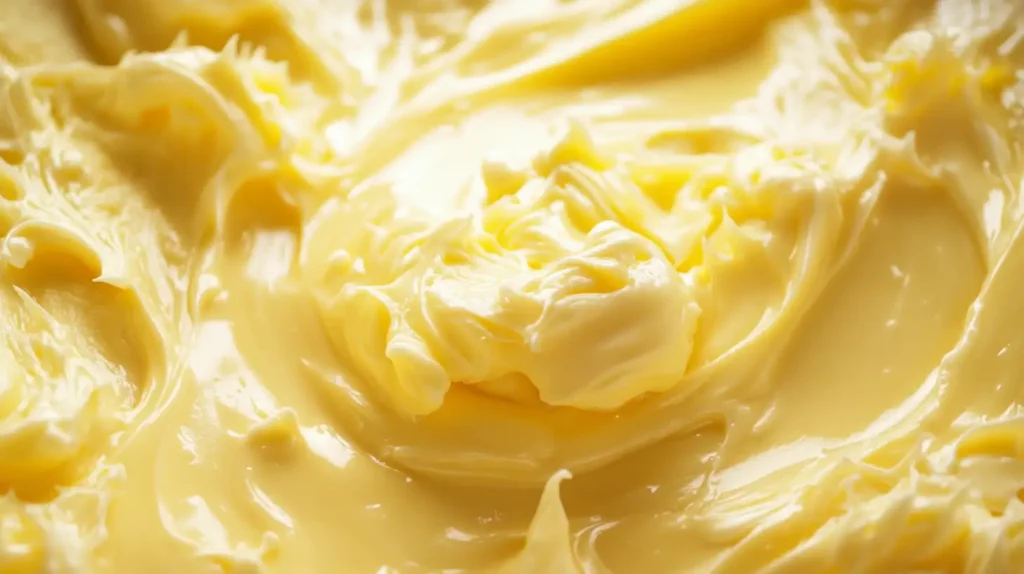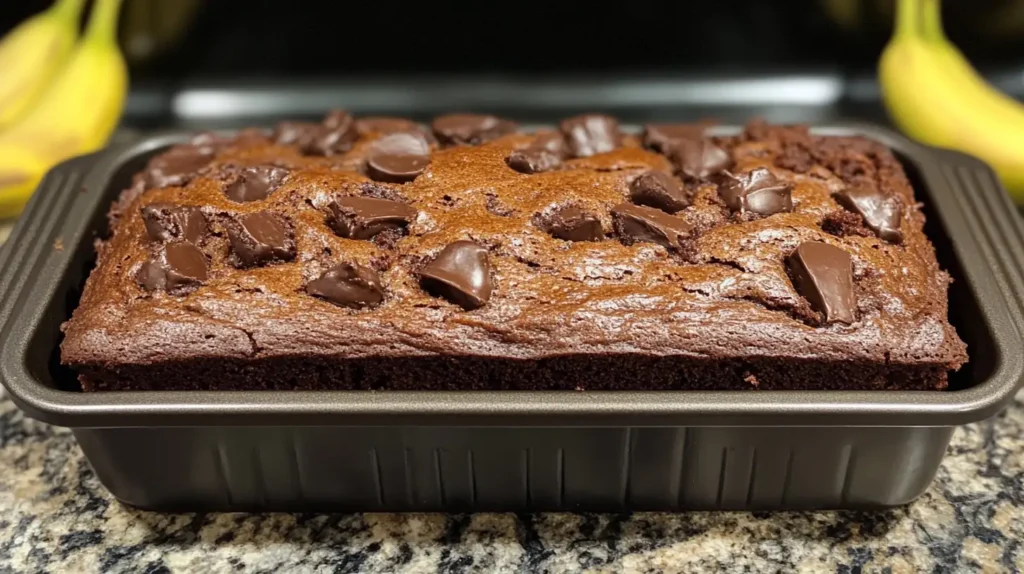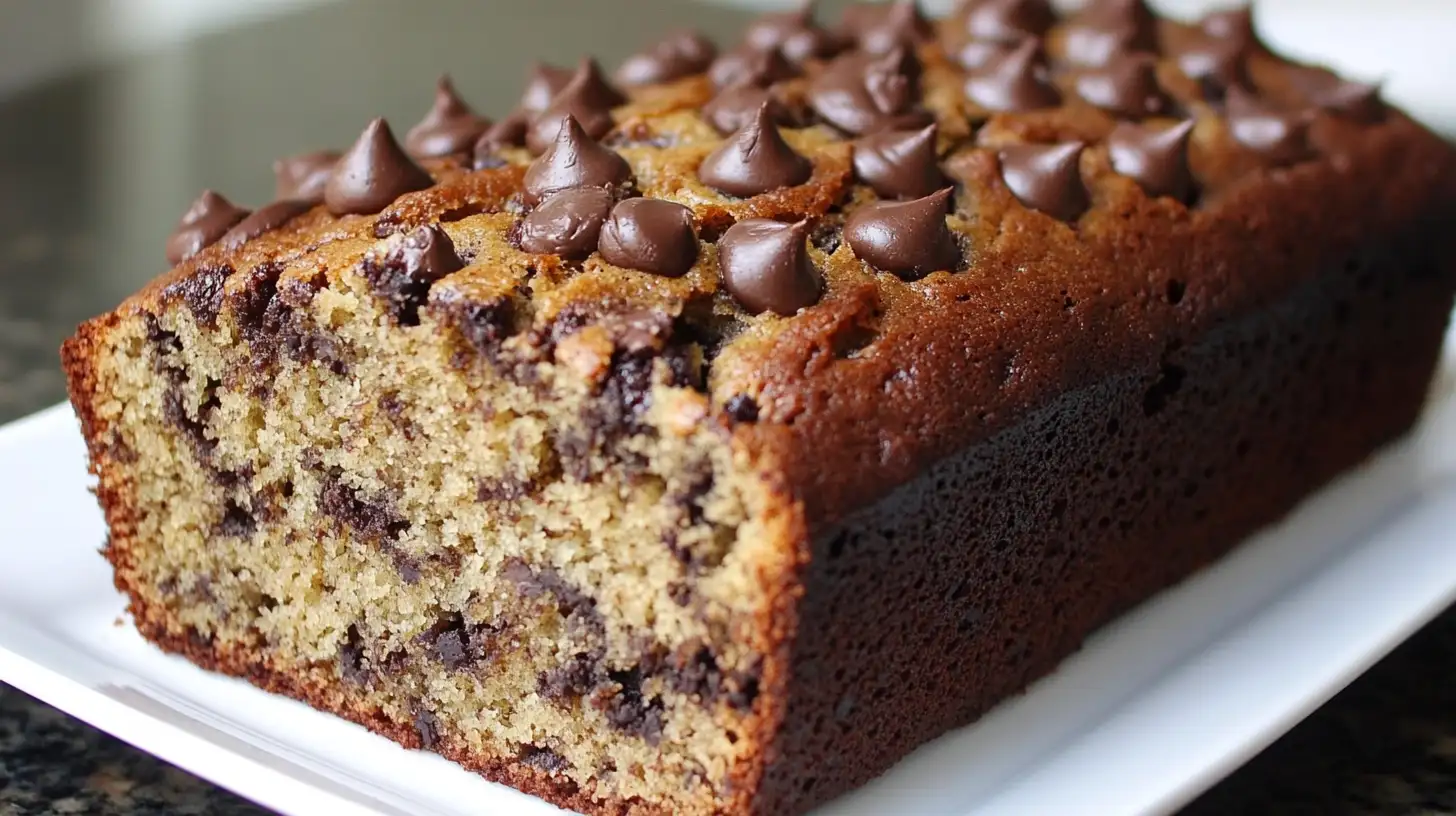Table of Contents
Introduction
Why Banana Bread recipe no butter Is a Game Changer
Banana bread has long been a favorite comfort food, loved for its moist texture and rich, sweet flavor. Traditionally made with butter, this classic recipe has evolved to embrace healthier and more versatile alternatives. Banana bread without butter is not just a workaround for missing ingredients; it’s a thoughtful choice for health-conscious baking and dietary flexibility.

a. The Rise of Healthier Baking Alternatives
In recent years, healthier baking trends have gained momentum, driven by an increased awareness of the impact of ingredients on overall health. Traditional recipes, often high in saturated fats and calories, are being adapted with substitutes like oils, fruits, and dairy-free options. These adjustments not only cater to dietary needs but also enhance the flavor and texture of baked goods.
- Replacing butter with plant-based oils (such as coconut or olive oil) introduces healthy unsaturated fats.
- Non-oil substitutes like applesauce or yogurt reduce calorie content while maintaining moisture.
- The shift towards natural sweeteners and whole grain flours further complements this healthier approach.
This wave of innovation in baking opens doors for experimenting with recipes like banana bread, making it an adaptable treat that aligns with a variety of lifestyles.
b. Benefits of No-Butter Banana Bread for Your Diet
Opting for no-butter banana bread provides a range of advantages that go beyond health:
- Lower Fat Content: Butter is high in saturated fat, which can raise cholesterol levels. Substituting it with oils or fruits reduces this significantly.
- Lactose-Free Option: Ideal for those who are lactose-intolerant or following a dairy-free diet.
- Moist and Flavorful Texture: Oil-based banana bread often retains more moisture than butter-based versions, enhancing its richness.
- Customizable Ingredients: The flexibility to use a variety of oils, sweeteners, or add-ins (like nuts or chocolate chips) makes it suitable for any palate.
Choosing butter-free recipes doesn’t just modify a classic—it elevates it to a guilt-free indulgence that fits seamlessly into modern eating habits.
Why Choose Butter-Free Banana Bread?

Many banana bread recipes rely on butter for richness and texture. However, replacing butter has benefits:
- Health Advantages: Lower saturated fat content by using oils or substitutes like applesauce. For more ideas on lighter ingredients, check out our guide to colorful ingredients in cookie recipes.
- Dietary Flexibility: Perfect for those who are lactose-intolerant or prefer dairy-free options.
The texture from using oils often surpasses traditional butter-based versions, ensuring a tender crumb every time.
Ingredients for Banana Bread Recipe No Butter
Making banana bread without butter is not just about removing an ingredient; it’s about carefully choosing alternatives that retain its signature moistness and flavor. The right ingredients and substitutions can elevate this recipe to a healthier, more versatile treat.

a. Common Substitutes for Butter in Baking
When replacing butter in baking, it’s essential to select substitutes that provide similar moisture and richness. Here are some of the best options for banana bread:
- Vegetable Oil: A neutral choice that ensures a moist texture without altering the flavor. Coconut oil can also be used for a slight sweetness. Learn more about oil alternatives in our backpacking recipes guide, which emphasizes flexible ingredient options.
- Applesauce: This is a low-fat alternative that works well for sweet recipes. It keeps the bread moist while reducing overall calories.
- Greek Yogurt: Adds creaminess and a subtle tanginess. Opt for plain, unsweetened varieties to control sugar content.
- Nut Butters: Almond or peanut butter adds a rich, nutty flavor while acting as a binding agent.
- Mashed Bananas: Yes, you can double up on bananas to replace butter, increasing sweetness and moisture naturally.
These substitutions ensure that your banana bread remains indulgent while meeting dietary needs or ingredient availability.
b. Key Ingredients for Flavor and Texture
To make a delicious and well-balanced banana bread without butter, the following ingredients are crucial:
- Ripe Bananas: Overripe bananas with brown spots are ideal for natural sweetness and a soft texture.
- Flour: All-purpose flour works great, but whole wheat flour can be used for a healthier, denser loaf. For gluten-free options, explore our low-histamine recipes for alternative flours.
- Sweeteners: Granulated sugar, brown sugar, or natural sweeteners like honey or maple syrup provide flexibility based on taste and health goals.
- Baking Soda and Baking Powder: These leavening agents ensure the bread rises and achieves its characteristic fluffiness.
- Spices: Cinnamon, nutmeg, or vanilla extract can enhance the flavor profile and create a warm, inviting aroma.
- Add-Ins: Chocolate chips, nuts, or dried fruits like raisins add texture and variety to each bite.
Combining these ingredients thoughtfully creates a butter-free banana bread that is rich, flavorful, and incredibly satisfying. For additional tips on flavor enhancements, check out our article on vanilla bean paste recipes, which highlights the importance of bold, aromatic ingredients.
Step-by-Step Preparation Guide
Making banana bread without butter is a straightforward process, but following the right steps ensures a delicious and perfectly moist loaf. From setting up your kitchen to mixing the ingredients just right, this guide will walk you through each stage with ease.
1. Preparing Your Kitchen and Tools
Before diving into the recipe, it’s essential to organize your kitchen and gather the tools you’ll need. This preparation step saves time and ensures smooth baking:
- Preheat the Oven: Set your oven to 350°F (175°C) and position the rack in the center.
- Prepare the Loaf Pan: Grease a 9×5-inch loaf pan or line it with parchment paper for easy removal.
- Gather Tools:
- Mixing bowls (separate for wet and dry ingredients).
- Measuring cups and spoons for accuracy.
- A whisk, spatula, and fork for mashing bananas.
For additional kitchen organization tips, explore our article on Dutch oven camping recipes for insights on efficient meal prep setups.
2. Mixing Dry and Wet Ingredients
Mixing the ingredients correctly is crucial to achieving a moist and tender banana bread. Follow these steps for best results:
Dry Ingredients:
- Combine 2 cups of flour, 1 teaspoon baking soda, 1/2 teaspoon baking powder, and a pinch of salt in a bowl.
- Whisk gently to ensure even distribution of leavening agents.
Wet Ingredients:
- In a separate bowl, mash 3 overripe bananas until smooth.
- Add 1/2 cup of oil (vegetable, coconut, or olive), 1 cup of sugar, 2 eggs, and 1 teaspoon vanilla extract.
- Stir until well combined.
For an extra burst of flavor, consider incorporating vanilla paste—our vanilla bean paste recipe explains how to make your own for a bold, aromatic twist.
3. Combining for the Perfect Batter
The final step is blending the dry and wet ingredients together to create a smooth, lump-free batter. Here’s how to do it right:
- Gradual Folding: Slowly add the dry mixture to the wet ingredients, folding gently with a spatula. Avoid overmixing, as it can lead to a dense loaf.
- Add Optional Mix-Ins: If desired, stir in chocolate chips, nuts, or dried fruit at this stage for added texture and flavor.
Your batter should have a slightly thick but pourable consistency, ready to bake into a perfectly moist loaf.
By following this preparation guide, your butter-free banana bread will turn out rich, flavorful, and satisfying. For more tips on achieving perfect texture in baked goods, check out our creme brulee recipe, which emphasizes ingredient harmony and proper technique.
Baking Tips and Tricks for Perfect Results
Banana bread is a forgiving recipe, but a few expert tips can elevate your loaf from good to great. From mastering the batter consistency to fine-tuning your baking time, these insights ensure your banana bread without butter is always a hit.

1. Achieving the Ideal Consistency
The consistency of your batter directly impacts the texture of your banana bread. Here’s how to get it right:
- Moist but Not Runny: Your batter should pour easily but not be overly thin. If it’s too thick, add a tablespoon of milk or almond milk at a time to adjust.
- Mash Bananas Thoroughly: Ensure the bananas are completely mashed to eliminate chunks, which could create uneven pockets of moisture.
- Fold, Don’t Overmix: Gently fold the wet and dry ingredients until just combined. Overmixing can lead to dense, chewy bread by developing too much gluten.
For more insights into achieving the perfect texture in recipes, explore our colorful ingredients guide for tips on balancing wet and dry components.
2. Baking Time and Temperature Adjustments
Getting the baking time and temperature just right is crucial for a well-risen, evenly baked loaf:
- Standard Temperature: Preheat your oven to 350°F (175°C), which is ideal for banana bread.
- Baking Time: Bake for 50–60 minutes, but start checking for doneness at the 50-minute mark by inserting a toothpick into the center. It should come out with a few crumbs, not wet batter.
- Avoid Overbaking: Overbaking dries out the bread. If the top browns too quickly, cover it loosely with foil for the remaining time.
For additional tips on baking consistency, check out our creme brulee recipe, which covers techniques for even cooking.
3. Avoiding Common Banana Bread Mistakes
Even seasoned bakers can encounter a few hiccups with banana bread. Here’s how to sidestep the most common issues:
- Dense Bread: Caused by overmixing or insufficient leavening agents. Use fresh baking soda and powder for a proper rise.
- Dry Loaf: Results from overbaking or a dry batter. Always monitor the oven closely and measure your wet ingredients precisely.
- Flavorless Bread: Make sure your bananas are overripe for optimal sweetness. Enhance the flavor with a dash of cinnamon, nutmeg, or vanilla extract.
For more ways to troubleshoot and enhance recipes, visit our guide to backpacking recipes, which emphasizes adaptability and success in challenging conditions.
By applying these tips, you’ll consistently bake a moist, flavorful, and perfectly risen butter-free banana bread. Whether you’re experimenting with add-ins or simply refining your technique, these tricks ensure baking success every time.
Looking for another versatile recipe? Try our easy vanilla bean paste recipe to elevate your baked goods.
FAQs About Banana Bread Without Butter
1. What is a substitute for butter in banana bread?
Several options can replace butter in banana bread while keeping it moist and flavorful:
- Vegetable Oil: A common choice for its neutral flavor.
- Coconut Oil: Adds a slight sweetness.
- Applesauce: Perfect for a lower-fat option.
- Greek Yogurt: Adds moisture and tanginess.
Pro Tip: For other creative ways to adjust your recipes, explore easy baking ingredient swaps.
2. Can I use bananas instead of butter in baking?
Yes, mashed bananas can be a fantastic butter substitute in baking. Use 1/2 cup of mashed bananas for every 1 cup of butter. They provide moisture and natural sweetness, making them an ideal choice for cakes, muffins, and of course, banana bread.
3. Why does my banana bread have no flavor?
Flavor issues in banana bread may result from:
- Unripe Bananas: Overripe bananas with black spots add more natural sweetness and flavor.
- Lack of Seasonings: Spices like cinnamon, nutmeg, or vanilla extract enhance taste.
- Overmixing: This can toughen the texture and dilute the flavors.
For more tips on enhancing flavor, check out our guide to Dutch oven camping recipes that focus on layering flavors.
4. What is a substitute for vegetable oil in banana bread?
If you’re out of vegetable oil, try these alternatives:
- Coconut Oil: Adds a mild sweetness.
- Olive Oil: Offers a rich flavor.
- Melted Butter: Works well if you’re not avoiding dairy.
- Applesauce or Yogurt: Healthy options for reducing fat.
For more creative substitutions, explore our article on immunity-boosting recipes, where flexibility in ingredients is key.
5. What is the best substitute for 1 cup of butter?
Depending on your needs, these substitutes work well:
- 1/2 Cup Coconut Oil: For baking and cooking.
- 1 Cup Applesauce: Best for sweet recipes like cakes or bread.
- 3/4 Cup Greek Yogurt: For a moist texture.
- 3/4 Cup Pureed Avocado: Great for chocolate-based recipes.
6. What is a healthy alternative to butter on bread?
For spreading on bread, try these healthy alternatives:
- Avocado: Rich in healthy fats and creamy texture.
- Nut Butters: Almond or peanut butter for added protein.
- Hummus: Savory, protein-packed, and smooth.
- Cottage Cheese or Greek Yogurt: For a high-protein, tangy option.
Conclusion
Crafting a delicious Banana Bread Recipe without Butter is a testament to how simple substitutions can elevate traditional baking. By replacing butter with healthier alternatives like oils or yogurt, this recipe maintains its rich, moist texture while offering a lighter, more nutritious option. Whether you’re accommodating dietary restrictions or simply experimenting with new ingredients, this variation is sure to satisfy.
For more inspiration, explore related recipes like the Sourdough Breakfast Recipes or the versatile Cottage Cheese Recipes to further expand your baking repertoire. With endless possibilities, there’s always room to innovate and create the perfect loaf for every occasion.

